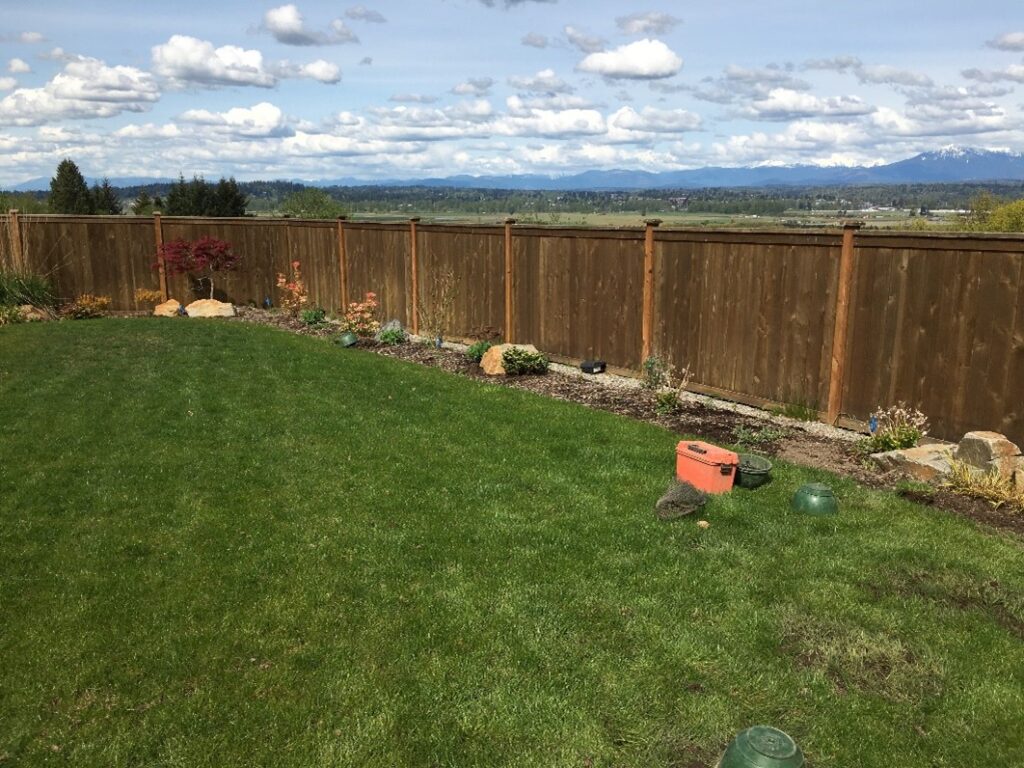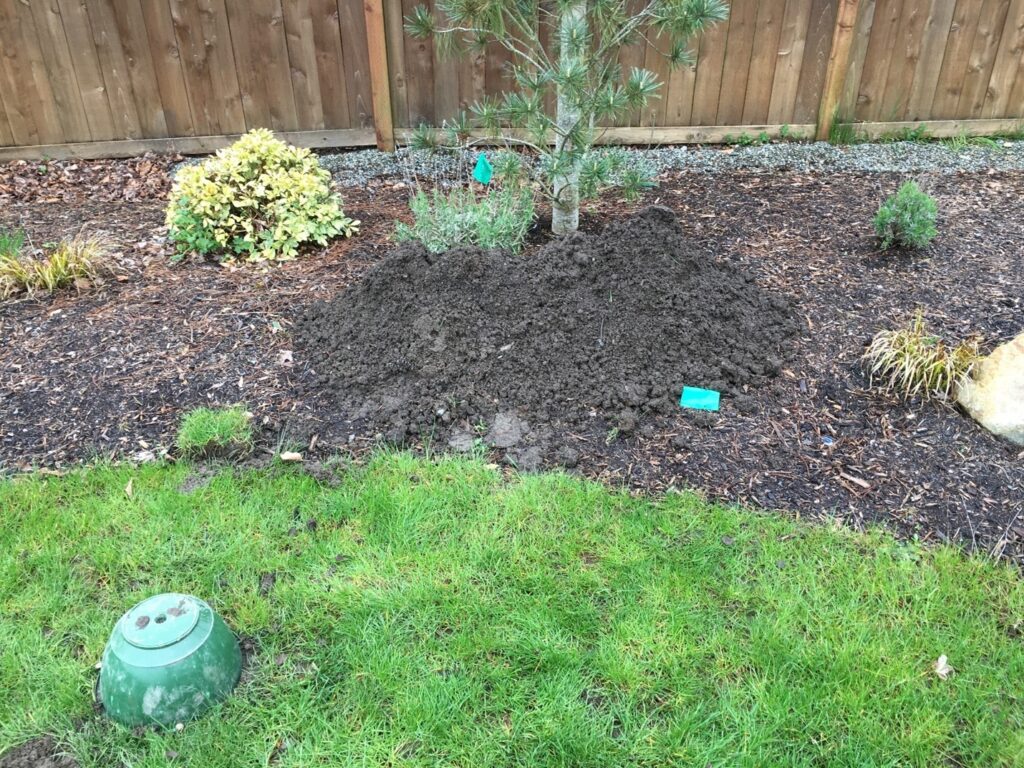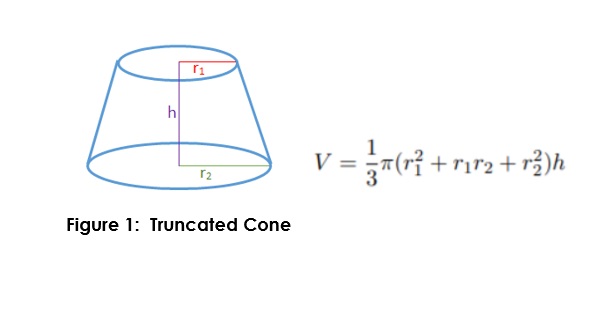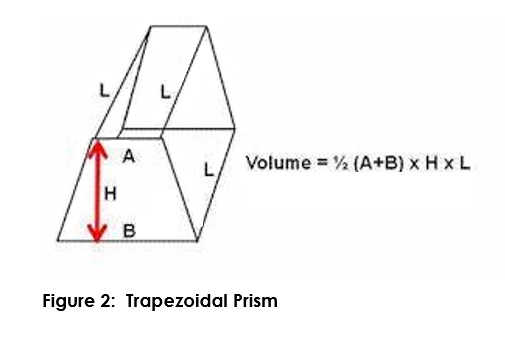Mole Tunnel Math!
At Northwest Mole Pros, we know that the molehill you see in your yard is unsightly, but it is the unseen mole tunnel below where much of the damage is occurring. When you understand just how much dirt the mole displaces as he digs his mole tunnel, you will see how serious a mole infestation can be.
Background
Most people come to know they have moles when mysterious mounds of dirt start appearing in their yard. With a little more exploration, they discover these mounds are the result of the moles digging tunnels. Unknowingly they have witnessed firsthand two (2) primary laws of Moleology:
- Moleology Law 1: moles dig tunnels which are essential for gathering food and survival.
- Moleology Law 2: moles push the dirt from digging tunnels to the surface to form mounds.
Exploration at this point frequently branches into one of two camps:
- Camp #1: How do I prevent these guys from destroying my yard?
- Camp #2: They are fellow creatures with a purpose – live and let live, I need to find ways to repair the damage as needed.
Common to both camps is the underlying question: What is the extent of the unseen mole tunnel system that these mountains of dirt represent? Well, you are in luck because that is the question this article hopes to answer.
What is the Extent of the Unseen Mole Tunnel System?
The photo below shows the backyard lawn area of a property with recent mole activity. The lawn is approximately 15 feet wide and 50 feet long with a total area of approximately 750 square feet.

There were several mole mounds, mostly at one end of the lawn. Dirt from the mounds was removed and piled in a nearby bed. The photo below shows the dirt pile which was approximately 4 feet long, 3 feet wide, and 1.5 feet high. For reference, the green flower pot in the lower lefthand corner has a 10-inch diameter.

To approximate the volume of the dirt pile, we used a truncated cone to represent the two (2) rounded ends of the pile and a trapezoidal prism for the center portion of the pile with the keys dimensions noted in table 1 below.



Using the dimensions from table 1, the truncated cone has a volume of 5.1 cu. ft. and the trapezoidal prism has a volume of 3.0 cu.ft. for a total of 8.1 cu. ft.
Based on personal observations, most mole tunnels are 1.5 inches to 2.0 inches in diameter. Table 2 below shows the results if we run these diameters through a pipe volume calculator using our estimated 8.1 cu. ft. dirt pile volume.

It is clear from Table 2, that tunnel diameter has a significant impact on estimated tunnel length causing it to range from 371 feet to almost 660 feet for a relatively small half-inch change in tunnel diameter. In spite of this fact, we now have a range of tunnel length – a high of 660 and a low of 371. Applying that to the estimated lawn area of 750 sq. ft. results in a high of 0.88 feet of tunnel per square foot to a low of 0.49 feet of tunnel per square foot.
Conclusion
We know that moles do not tunnel uniformly in a lawn, but we now have a comparative estimate for the tunnel density. Yes, 6-10 inches of tunnel per square foot of lawn.
NW Mole Pros Makes Mole Tunnel Math Easy!
Right now, you may be saying “I was told there would be no math…” Well, no problem! Northwest Mole Pros is happy to take the calculations off your hands and get to work solving your mole problem. Just contact us by phone at (425) 368-3700, or by email at customercare@nwmole.com.
